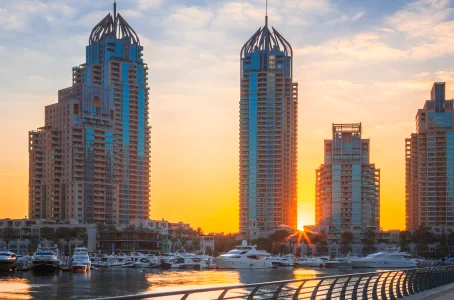Mosques of Dubai: Spiritual oases among golden sands and glass skyscrapers

Content
Spiritual Treasures of Dubai: A Journey to the Great Mosques of the Persian Gulf

There are some places in the city of contemporary skyscrapers and carefree luxury, Dubai, where you can experience the spirit of thousands of years of ancient history and witness the magnificent works of Islamic art - these are the mosques. The mosques represent a great source of pride for the citizens and are an exquisite synthesis of traditional Arabian architecture and contemporary design.
Jumeirah Mosque

Historical context
Rising above Dubai's upscale Jumeirah district, this mosque is one of the city's most recognizable symbols. It was built in 1976 and became one of the few mosques in Dubai that is open to non-Muslims.
Architectural features
The Jumeirah Mosque impresses with its striking beauty, representing traditional Fatimid architecture. The mosque's walls are carved in white stone, and at night they glow gloriously under the warm spotlight, painting a fascinating picture.


Al Farooq Omar bin Khattab Mosque

Historical context
Opened in 2011 and named after the second Caliph Omar bin Khattab, the mosque accommodates up to 2,000 worshipers, which makes it one of the largest mosques in Dubai.
Architectural features
The Al Farooq Omar bin Khattab Mosque makes an impression with its grand blue dome and two tall minarets. The interior of the mosque is astonishing, with 21 large chandeliers and 60 stained-glass windows decorated with religious motifs and symbols.


Al Salam Mosque

Historical context
Constructed in 2014, this mosque is one of the most contemporary mosques in Dubai. It is located in the densely populated Al Barsha district and draws a lot of worshipers.
Architectural features
The Al Salam Mosque features a combination of traditional Islamic and modern architecture. With white stone walls, the mosque is decorated with traditional Arabic ornaments, and the stained-glass windows give the mosque a special lightness.


Abdul Rahman Siddique Mosque

Historical context
The Abdul Rahman Siddique Mosque was constructed in 1998, and since then it has been one of the most visited mosques in Dubai. It is named after Abdul Rahman Siddique, one of the companions of the Prophet Muhammad.
Architectural features
Featuring white walls, golden domes, and four minarets, the mosque is a wonderful example of conventional Arab architecture. The exterior is decorated with large religious texts, while the interior features luxurious chandeliers and mosaics.


Masjid Al Rahim Mosque

Historical context
The Masjid Al Rahim Mosque is a young mosque that opened in 2018 and is located in the Dubai Marina district. It has become popular among locals and tourists.
Architectural features
A majestic mosque featuring six domes and two minarets stands on the water's edge, allowing a spectacular view of the Marina. The interior of the building features a huge wood and glass light fixture, as well as marble columns and stained-glass windows, creating a one-of-a-kind atmosphere.


Khalifa Al Tajer Mosque

Historical context
The Khalifa Al Tajer Mosque, opened in 2014, is exceptional in being the first "green" mosque in Dubai, harnessing the power of solar panels for its functioning.
Architectural features
This house of worship is stunning because of its simplicity and understated design. The outside of the mosque is designed in light brown tones, while the inside has warm, neutral tones, creating a calm and peaceful atmosphere.


City Walk Mosque

Historical context
The City Walk Mosque is one of Dubai's newest mosques, having opened in 2018. It was developed as part of the City Walk project, which integrates shopping and entertainment centers.
Architectural features
The mosque has a contemporary design and bold architectural solutions. It is faced with white marble, and the interior is ornamented with delicate carvings that give a sense of lightness and airines


DIFC Grand Mosque

Historical context
Opened in 2019 in the Dubai International Financial Centre (DIFC) district, this mosque was designed to meet the high standards of this business district.
Architectural features
The DIFC Grand Mosque is distinctive for its unique structure, including prayer spaces, meditation areas, and green areas. Its interior is covered with sophisticated patterns and details, including a beautiful mosaic and wood paneling.


Grand Mosque

Historical context
The Grand Mosque is one of the oldest and most important mosques in Dubai. It was rebuilt in 1998 after the original building was demolished to construct a new one.
Architectural features
The Grand Mosque is known for its 45 small domes and one large dome, as well as the tallest minaret in the city. The interior is ornamented with blue and gold patterns, and the large inner courtyard makes it possible to enjoy a beautiful view of the mosque.








The cultural significance of mosques in Dubai

The mosques of Dubai are not only prayer places but also a considerable part of the city's cultural legacy. They represent the history and traditions of Islam, demonstrating the originality of Islamic architecture.
There is also an opportunity for people who want to look at the mosques from the water to rent a yacht and have a unique journey through the waters of the Persian Gulf. As an example, you can sail up to the Masjid Al Rahim Mosque and admire a stunning view of its grand domes and minarets. This not only enables you to view the mosques from a new perspective but also adds a unique charm to your journey in Dubai.
Visiting mosques as part of discovering Islamic culture

The visits to Dubai's mosques are not simply stops for sightseeing. They represent a significant component in the process of deeply understanding the Islamic culture, which is deeply ingrained in the history and traditions of the region.
Whether the historic Jumeirah Mosque or the modern City Walk Mosque, these mosques are a true representation of their time, expressing in their design and architecture the spiritual values and social tendencies of their age. It is an ideal place to enter the heart of Islamic art, architecture, and spirituality.
The very act of visiting a mosque creates a unique impression. The gentle rustling of prayer rugs under your feet, the smell of incense in the air, the sounds of Quran readings, and the silence of the meditative environment - all these help to create an atmosphere of peace and serenity. These are places to relax from the city's rush and touch the everlasting values of Islam.
Visiting Dubai's mosques is an essential part of discovering the unique Islamic culture that remains an important part of life in this dynamic city. It is not just an important part of a tourist journey but also an experience that enhances our vision of the world and gives us a more profound understanding of centuries-old traditions and beliefs.
Rules of mosque visitation for women and men

It is very important to be respectful of local traditions and religious rules when visiting Islamic places of worship - the mosques. The ancient traditions and cultural features cause a specific dress code for anyone who comes to pray or just to visit these holy place
Clothing that completely covers the legs is usually necessary for men; long pants are the best choice. Short pants or bermudas are not considered suitable, as they do not meet the modesty standards required in the mosques.
The women who attend the mosques should make sure their bodies are fully covered. This includes a headscarf to cover the hair and clothing that covers the arms and legs. The modest outfit should not be tight on the body and should not be transparent. Additionally, it is important to keep in mind that in many mosques, shawls and abayas are offered for female visitors who do not possess suitable clothing.
Keeping these rules is not only part of religious etiquette but also an expression of your respect for Islamic culture and faith. Following these rules will enable you to become more deeply imbued with the atmosphere of peace and spirituality that Dubai's mosques offer.
Important information
The article is for informational purposes only. The Tirena Boats company deals only with renting yachts and organizing events on them.

What to take with you to Dubai to feel comfortable and not break the traditional rules of style!

Reviews of popular shopping malls, shopping recommendations and secrets of shopping in Dubai.

Useful phrases that will help you in any situation, help you maintain a conversation on everyday topics

As a bonus to your purchases, the government gives you the opportunity to get back part of the VAT paid using Tax Free. But how to do it? In this article we will look at all the nuances in detail.
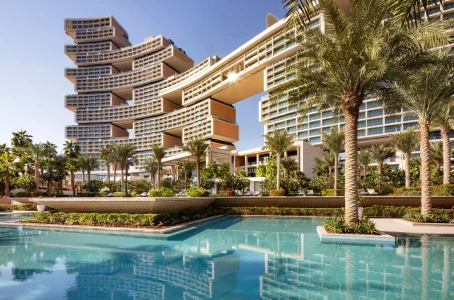
A detailed overview of the excellent new hotels in the UAE. Discover the exceptional attributes, services and facilities offered by these leading representatives of the hotel business.
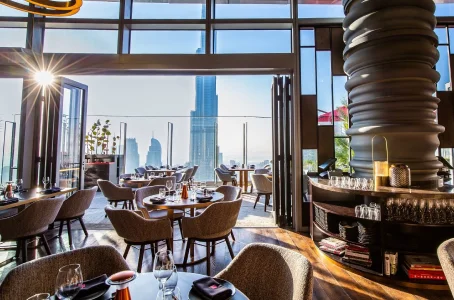
Visit Dubai's cozy lounges and restaurants with stunning views, exceptional menus, and an incomparable atmosphere.
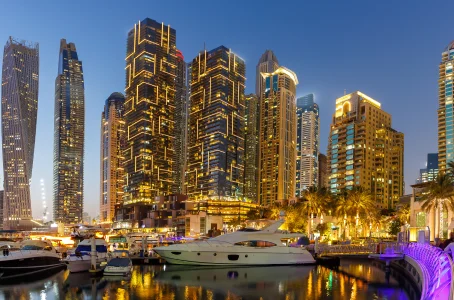
We invite you to go from wonderful sights to the best viewing platforms in the city, offering breathtaking views.

We share places to visit, events to organize, and other ways to make your celebration unforgettable.

A detailed overview of Dubai's beach clubs. Descriptions, addresses, costs, and visitation rules.

Popular clubs and bars in Dubai for Russians. Rules, operating hours, and a club map.
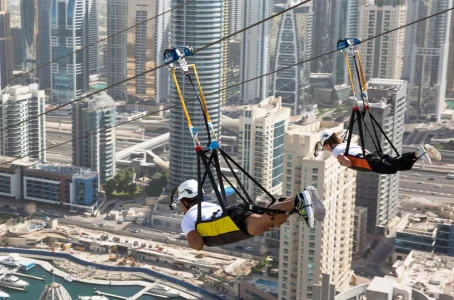
An adventure that allows adrenaline junkies to fly over the city.
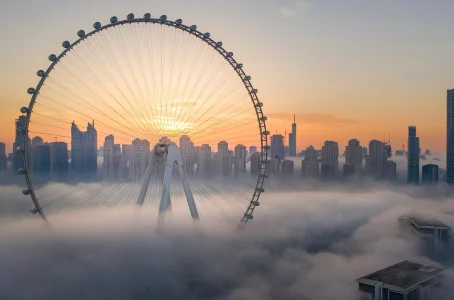
An amazing ferris wheel that is definitely worth a visit in Dubai.

